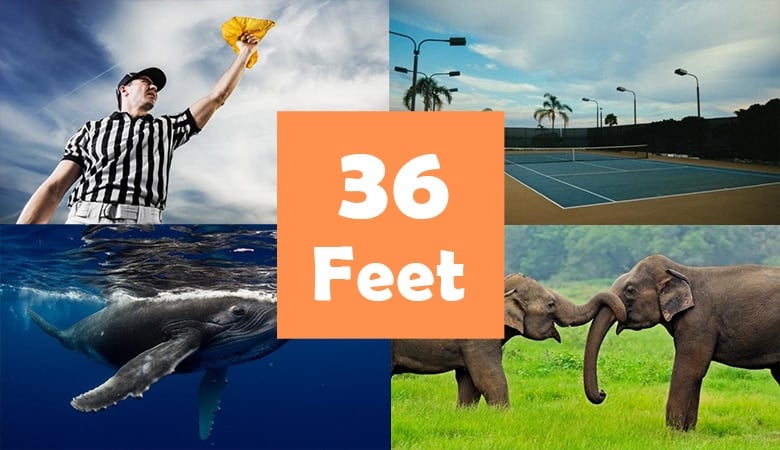Did you know that lions can leap forward 36 feet? Despite being terrible climbers, lions are terrific hunters thanks to this jumping ability. Do you know what else was about 36 feet long? The 650 BC giants mentioned in the Bible, including Goliath and his three giant brothers.
But how long/tall is 36 feet exactly? It is 10.9 meters, 432 inches and 12 yards. Can you visualize it in your head without the help of a tape measure? Here is a list of eight things that are 36 feet long to help you with that.
1. Telephone Pole

A standard telephone pole in the streets of the USA is 36 feet tall. Some poles can reach up to 120 feet to satisfy clearance requirements in certain areas, but these are not standard telephone poles.
Though you can find other materials, most of these poles are made of wood (mostly pine wood) and can last 25-50 years. Telephone poles are planted 6 feet into the ground for stability, and depthing tubes are fitted to allow inspectors to check if the contractors have buried them deep enough.
2. Tennis Court

A professional tennis court is 120 feet by 60 feet. However, the actual playing area is 78 feet in length and 36 feet in width for doubles. In fact, the baseline in tennis is a 36-foot line that marks the rear boundary of each half of the court.
The singles court is still the same length but only 27 feet in width. That extra space is required so players can run after the balls. While all ATP and ITF tennis courts are standard size, you can make your own recreational court to be any size.
3. Humpback Whale

The humpback whales are enormous and fascinating creatures known for their haunting and melodic songs, not to mention their acrobatic displays in water. They may not be the biggest whales in the world, but they do grow to 60 feet and 40 tons in weight.
Their flippers grow to 16 feet long on both sides while their tails extend to 18 feet in width. That said, your average humpback whale is usually 36-40 feet long and weighs around 20 tons. Like all the other whales, the female humpback is larger than the male.
4. School Bus

Traditionally, school buses were used to transport children to and from school only. That’s the first place where everyone who used the bus felt real independence. Well, not anymore. Today, people buy school buses and convert them into temporary or permanent living quarters.
For that reason, people are constantly seeking to know the length of these buses. On average, a yellow school bus is 36 feet in length. However, you can find a smaller one that is 22 feet or longer ones over 42 feet long.
5. 3 Story Building

If you live in an area with height restrictions due to airports and other factors, you may be required to keep your building under three stories. Considering one story is equal to 10.8 feet, your building will be 36 feet high. You should build a wider building instead of a taller one to maximize your earning potential.
6. 3 Elephants

If you measure a grown elephant from the shoulder to the toe, it will be 9-13 feet tall. In fact, the elephant is the tallest animal after the giraffe, which is 19.7 feet tall. If you’ve ever seen an elephant up-close, imagine three of them stacked on top of each other. That is how long 36 feet is, as dangerous as that might be.
7. City Bus

Buses are considered the workhorse of urban transportation in all cities across the globe. While they may vary in design, length and capacity, there is still a recognized standard size for city dimensions.
The average city bus is between 35 and 45 feet in length and 8-9 feet in width. Articulated buses, composed of two joined buses, are usually 60 feet in length and can hold 120 passengers to reduce traffic in major cities.
8. Penalty Distance

If you are a soccer fan, you are familiar with penalties or direct free kicks. This is when a player is allowed to take a shot on the goal when the only defender is the goalkeeper. It is a punishment to the opposing team for a particular offense only punishable with a free-kick.
What makes this kick so powerful is that the kicker stands only 36 feet from the goalpost. While the goalkeeper can try to imagine where the ball will be aimed, it’s often impossible to stop it due to the speed and force it comes with from that short distance.
The dimension of stuff has been an interest of mine ever since I was a child. What I believe is most fascinating about the dimension of stuff is how extremely long, tall and wide some objects are both on earth and in the universe.

